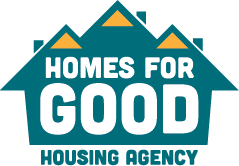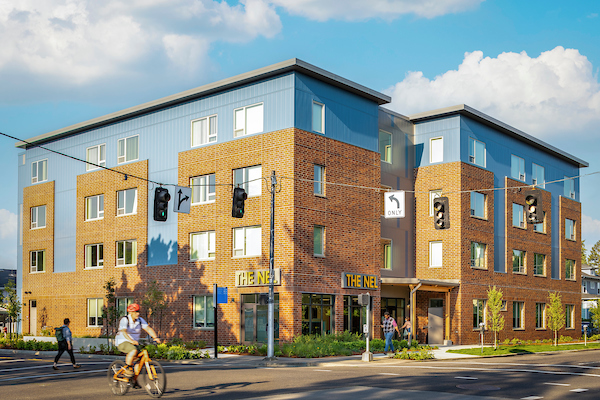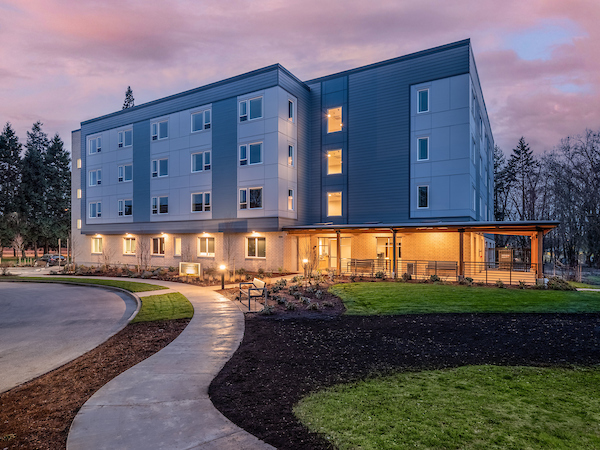Homes for Good believes that everyone deserves an affordable home and we feel strongly that our resources should be used to support those with the highest barriers to stable housing. Our Permanent Supportive Housing projects were developed through a community collaboration to identify, engage, house and support the people in our community who have been homeless the longest and are the most vulnerable to the impacts of chronic homelessness. Permanent Supportive Housing is a type of specialized housing that combines stable housing and rental assistance with comprehensive supportive services including intensive case management, behavioral health support, and onsite care teams.
The 2018 Lane County Shelter Feasibility Study (TAC Report) set a goal of developing 350 new units of Permanent Supportive Housing and we are actively working to help meet this goal with our pipeline of projects that you can see below.
All referrals for our Permanent Supportive Housing projects come through Lane County Coordinated Entry system’s centralized waitlist. Learn more at Coordinated Entry System
The Housing First ModelHomes for Good has chosen the Housing First Model for Permanent Supportive Housing.
Housing First is an approach to quickly and successfully connect individuals experiencing homelessness to permanent housing without exclusive screening criteria and barriers to entry, such as sobriety, treatment or service participation requirements. Supportive services are offered to maximize housing stability and prevent returns to homelessness as opposed to addressing predetermined treatment goals prior to permanent housing entry.
Research has shown that the Housing First model is more effective than shelters and transitional housing systems at housing the "hardest to serve" individuals, who often struggle with complex and overlapping health, mental health, and substance use disorders. Research also identifies that, if not housed, the chronically homeless utilize 50% of the shelter system resources, utilize a disproportionate percentage of hospital emergency services, require longer care, and have higher rates of incarceration and recidivism.
This model values housing as the foundation to health and stability and recognizes that there are many variables that may lead someone to experience homelessness. Lack of stable housing can drastically impact physical and mental health and deeply engrained issues such as income inequality and lack of affordable housing make it difficult for those experiencing homelessness find a safe place to call home. Once someone is stably housed and have basic needs met, they can then focus on other aspects that make it challenging to retain housing including behavioral health problems, substance abuse, joblessness, etc.
Residents in Permanent Supportive Housing are not required to engage in services as a condition of their housing, however residents do sign a traditional lease that requires that they pay their rent on-time, maintain their home in a safe and healthy manner and respect the community agreements at their property. Supportive Services teams work closely with residents and Property Management to provide education and support for residents as they adjust to living in community and understanding their rights and responsibilities as residents. Residents are able to access additional services if and when they are ready.
Trauma Informed Design and Service DeliveryAll of our projects use a Trauma Informed Design and Service Delivery approach, which recognizes impacts of trauma on the unhoused community, specifically those who have experienced long-term homelessness, and works to develop buildings and systems that maximize safety and avoid retraumitization. Our architects include components such as large windows, soothing colors, separation of spaces, calming water features and open lines of sight to help residents feel safe and empowered. Our service partners develop service plans with a trauma informed lens and are designed to maximize client choice, transparently communicate expectations and offer support and tools for growth at every opportunity.
Current and Future Permanent Supportive Housing Communities



